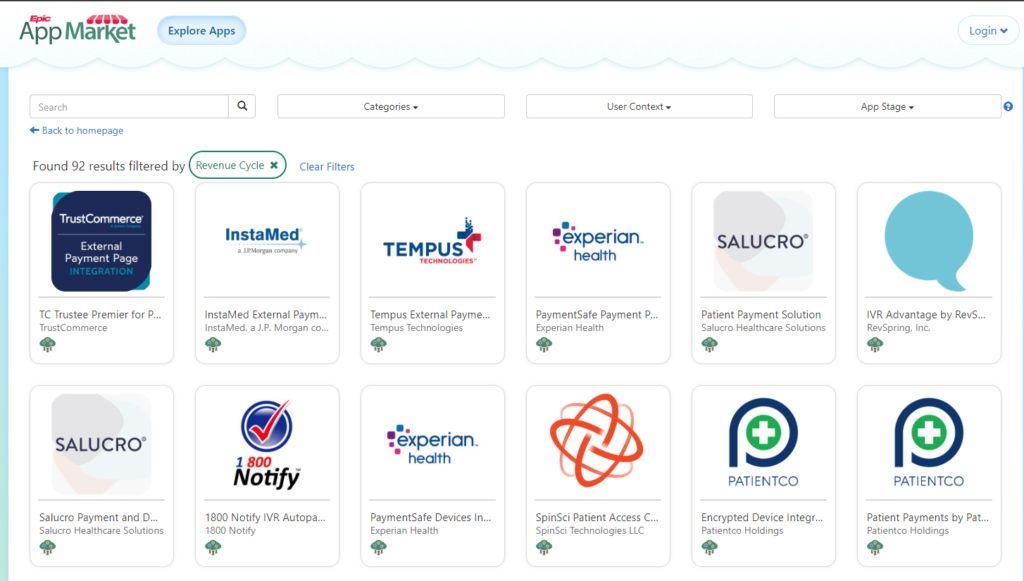The Other (less Epic) Epic.

Epic Systems, a system of record / the data layer on which healthcare systems sit, is benefitting from the decision to open up access to its data to everyone.
Epic, Cerner and other EHR (Electronic Health Record) management systems act as a system of record that is deeply integrated into the healthcare landscape. Their systems, compliant with several FDA and other regulations are responsible for accessing, organizing, storing and sharing electronic medical records. Epic’s software is used in academic medical centers, community hospitals, hospice, rehab centers, dental clinics, nursing homes and more. Chances are if you went to a hospital there’s ~30-40% probability your doctor / nurse practitioner logged your information, charts, etc. in Epic.
Epic was never meant to become the behemoth it did in healthcare from a patient engagement, treatment management, care plan navigation perspective – it was designed to be a billing and insurance tool first (even healthcare is after all, driven by revenues and profitability and in our insurance system collecting revenue is incredibly important, but incredibly arduous). As a company that suddenly found itself to be the systems of record (carrying all patient information in a HIPAA compliant way), Epic found itself unable to innovate (or devote resources to innovating) but the holder of data required to perform tasks that others wanted from healthcare systems.
This is why, as a platform carrying tons of patient data, Epic became for healthcare what the Apple platform is for apps on our cell phone. Epic, Cerner, Allscripts and other HER systems opened their product up to third parties by launching its app store, where any 1-2 person team of engineers could request access to APIs for integration (one way integration that only allowed data to flow from Epic to the apps, not the other way), and create apps that performed tasks that the EHR alone does not.
Over time, regulation also adapted and came up with the FHIR standard that allows information to be integrated in a better manner (vs. a poor form of ‘integration’ could be slowly porting over CVS files).
Today, App Orchard has over 600+ applications that span several categories such as analytics, clinical specialties, communications, CRM, Infrastructure, Medication Management, Outpatient Pharmacy Management, Payers, Population Health, Revenue Cycle, Scheduling & Patient Intake, Telehealth and more! Given that so many categories of these applications have a massive impact on patient outcomes (scheduling ease can be a key driver of better outcomes) but Epic and other EHR systems have not had the time or resources to invest in these applications, creating a more open platform has been a significant unlock of customer satisfaction, different forms of revenue and more product verticals for Epic to manage.
See here for examples of what Epic’s “App Orchard” looks like:

From a customer satisfaction perspective, doctors / nurse practitioners or assistants who interact with Epic find ease in applications that have better UX, more functionality and cater to their needs (Epic and Cerner, among other EHRs have a poor reputation when it comes to usability); this in turn drives even more reliance on Epic as the underlying source of information / the “system of record” on top of which these “systems of engagement” build their products. This is equivalent to buying an iPhone because you’re interested in apps that Apple doesn’t develop – a true win – win.
The app orchard is also a great revenue unlock for EHR systems. Epic anecdotally charges ~30% of gross revenues for access to its patient records, and sometimes also charges a transaction fee where it makes sense; hence, it has been able to unlock a large amount of revenue growth in existing customers and drive up its customer net retention.
The model is also highly sustainable as it evolves low effort (technically scalable i.e. once you set up APIs you just need to gate keep and approve, others build apps and you benefit from their work).



Super interesting, Saad. I knew about Epic (in fact my ophthalmologist was just complaining about it to me the other day), but I had no idea about the platform element. I find it interesting that Epic made this move into facilitating apps. The biggest problem with Epic is that their customers and users are not well aligned. Administrators love it and doctors hate it. So why, when administrators are the gatekeepers, are they trying to help with ease of use for doctors/NPs/etc. I suppose the answer is they have an additional revenue source? I’m also curious about the adoption of the platform. I know you mentioned the number of apps, but are there figures on number of app downloads? How do they assess quality and regulatory compliance of apps?